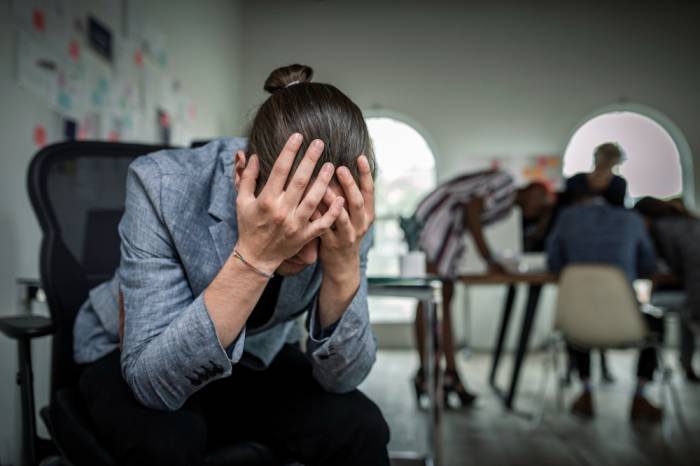Anxiety disorders are steadily becoming more widespread. As per 2020 research, the number of adult Americans with anxiety-related diagnoses grew from 5.12% to 6.68% from 2008 to 2018. Millions of people in the US are suffering from generalized anxiety disorder and other conditions from this category.
Regardless of such statistics, there are many misconceptions about anxiety. The main problem is that inaccurate beliefs increase the stigmatization of anxiety and make patients feel embarrassed when they want help. So, let’s debunk the eight most common anxiety myths!
Myth #1. Anxiety is Not an Illness
This is one of the most common myths about anxiety. But it is a real psychiatric condition, or better to say, a group of conditions—anxiety disorders. They can be defined using the criteria mentioned in the DSM-5, Diagnostic and Statistical Manual of Mental Disorders.
Moreover, anxiety disorders are included in the International Classification of Diseases (ICD-10). For example, F41.1 stands for generalized anxiety disorder, and F41.0—for panic disorder without agoraphobia, among others. Although not every experience of anxiety indicates a disorder, it can be diagnosed if it fits the criteria of an illness.
Myth #2. Worrying and Anxiety Are the Same Things
While constant worrying is a symptom of anxiety, they are not the same. Worry is a short-term feeling caused by a rational reason that boosts problem-solving abilities. On the other hand, anxiety occurs from exaggerated fears or unrealistic beliefs. It is prolonged and usually makes one frustrated and more inclined to avoid the problem. In addition, anxiety is characterized by persistent and excessive worrying, not situational stress.
Myth #3. Anxiety Can Go Away Without Treatment
For some people, the implementation of a healthy lifestyle is helpful. However, you may need something more than better nutrition, regular physical activity, and meditation. And it’s not a reason to feel ashamed.
Anxiety is often based on irrational reasons. To get rid of them, you may need help from a therapist or a psychiatrist who will choose the most suitable therapy or medication. There is no need to suffer from debilitating symptoms that interfere with day-to-day life, while professional care has clinically proven effectiveness. Moreover, thanks to telemedicine services, anxiety treatment is available online.
Myth #4. Social Anxiety is Simply Shyness
Shyness is a personality trait, while social anxiety is a disorder. Also, there is a difference in the severity of symptoms. Shy people may feel uncomfortable in some social settings, but it doesn’t result in panic. When it comes to social anxiety, the fear of being judged or embarrassed in social interactions is extremely high. Because of this, a person may isolate themselves to avoid exhausting symptoms, even though they may want to participate in some activities.
Myth #5. Panic Attacks Are the Main Symptom of Anxiety Disorders
Panic attacks are a symptom of various anxiety disorders but not all disorders. Some types of anxiety have additional or even completely different symptoms: chest tightness, sleep fluctuations, trouble concentrating, intense fears, etc. So, despite the misconceptions about anxiety, the absence of panic attacks is not the reason to avoid professional assistance when someone is in survival mode.
Myth #6. Panic Attacks Are Life-threatening
Sometimes, the symptoms of anxiety—and especially panic attacks—can be frightening. One may have difficulty breathing and a racing heart, which increases stress. But although the physical symptoms might seem severe and dangerous, there is a very low risk of actually fainting. Of course, the experience is unpleasant and may result in vomiting, lightheadedness, or another uncomfortable state, but it is not life-threatening.
Myth #7. Avoiding Triggers is the Best Tip
Avoidance is a common coping technique in people with anxiety disorders. Thus, people with social anxiety may stay away from social events. Those with specific phobias are doing their best to avoid the trigger. Still, this is not the best solution in the long run. It might result in avoiding necessary tasks and becoming even more anxious because of constantly looking for the stressors. With the help of a therapist, one learns how to face fears without a strong emotional response.
Myth #8. Anxiety is Untreatable
One of the widespread anxiety myths is that treatment is ineffective. But it is easily disproved by lots of people who benefited from proper interventions. First, psychotherapy is used to eliminate the symptoms. These include cognitive-behavioral therapy (CBT), exposure therapy, dialectical behavioral therapy, and more. According to ADAA, patients see significant improvement within 12 to 16 weeks of attending CBT sessions.
In addition, pharmacological treatment can be applied. According to studies, 70% of participants responded well to benzodiazepines. Also, several antidepressants showed efficacy ranging from 40% to 91%, depending on the medication.
Final Word
Debunking anxiety myths one by one can reduce the stigma around this condition. But if left untreated, it may affect both the emotional and physical state. Therefore, becoming more aware of mental issues and their treatment is the first step to being mentally healthy.
Knowing the above facts about anxiety will make you more attentive to your emotional state. Whenever you feel that your worries become overwhelming and are accompanied by additional symptoms of anxiety disorders, don’t hesitate to seek professional help.



